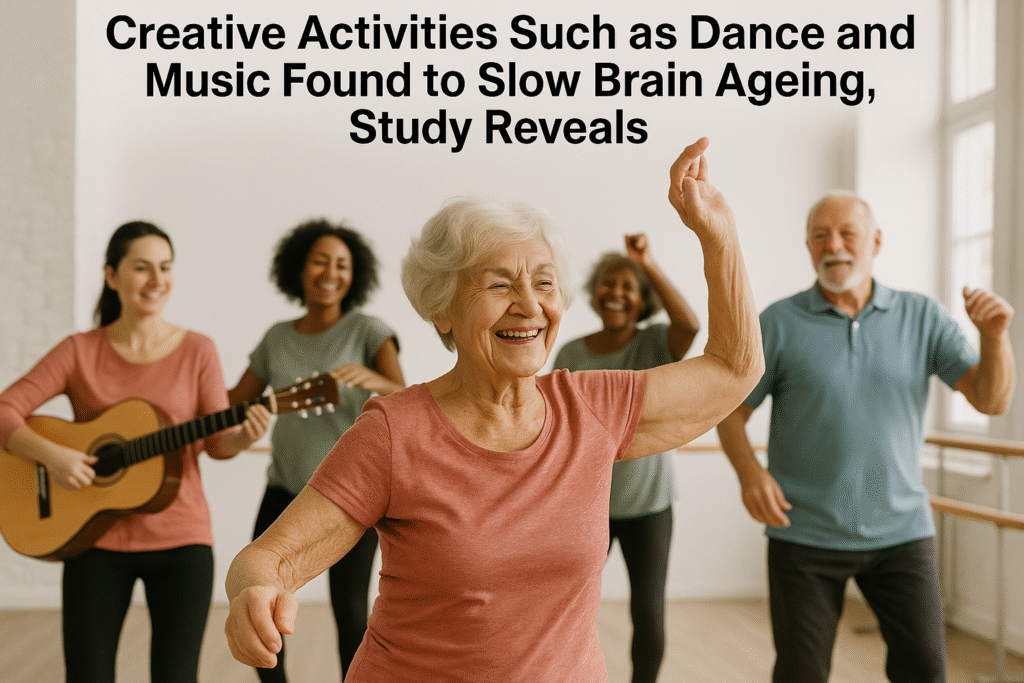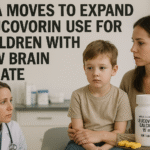By Harshit | 5 October 2025 | Santiago, Chile | 09:30
A new international study suggests that engaging in creative activities such as dancing, playing music, painting, or even video gaming can slow down brain ageing. The findings, published on 3 October in Nature Communications, provide fresh biological evidence that creative pursuits help maintain neurological youth and preserve brain function in areas most vulnerable to age-related decline.
The Science of Brain Clocks
The research team, led by neuroscientist Agustín Ibáñez of Adolfo Ibáñez University in Santiago, Chile, used an advanced modelling technique known as “brain clocks” to measure the pace of brain ageing. Brain clocks estimate the difference between a person’s chronological age and their brain’s apparent biological age by analyzing patterns of functional connectivity — how different regions of the brain interact and work together.
The study examined neuroimaging data from 1,240 participants across 10 countries to build machine-learning models that could predict brain age. These models were then applied to a smaller group of 232 individuals who actively engaged in creative activities, including tango dancers, musicians, visual artists, and video game players, representing different ages and levels of expertise.
Creativity as a Protective Factor
Results revealed that all four creative pursuits had a measurable anti-ageing effect on the brain. Participants who had been practicing their chosen activities for years showed the most pronounced benefits, but even beginners exhibited signs of a younger brain compared to peers with no creative practice.
Among the different activities studied, tango dancing emerged as the most effective at slowing brain ageing. Expert tango dancers had brains that appeared, on average, seven years younger than their chronological age. Researchers attribute this to the cognitively demanding nature of tango, which requires coordination, rhythm, memory, planning, and rapid adaptation.
“Creativity doesn’t just enrich culture and personal well-being — it also seems to strengthen the brain against the biological processes of ageing,” Ibáñez said.
Targeting Vulnerable Brain Regions
The team also mapped how creative activities impact specific brain areas. They discovered that creativity had the greatest protective effect on the frontoparietal region, which is crucial for functions such as working memory, decision-making, and problem-solving. This region is particularly susceptible to age-related decline.
In highly experienced participants, neural connections were strongest in brain regions linked to movement coordination, rhythm, and cognitive control. These reinforced pathways suggest that creative activities foster resilience against the normal weakening of connections that typically occurs with age.
Building on Earlier Evidence
Previous research has long suggested that engaging in creative pastimes helps maintain emotional health and cognitive flexibility in older adults. However, most of these studies relied on behavioral assessments or self-reported outcomes rather than biological measurements.
“This study provides rare mechanistic evidence,” Ibáñez explained. “We can now show, using advanced neuroimaging, that creativity strengthens functional connectivity in specific areas of the brain. This goes beyond correlation — it suggests causation.”
The machine-learning models used in this study make it possible to quantify how creativity changes the pace of brain ageing, offering a more precise measure than traditional cognitive tests.
Broader Implications
The findings could inform new approaches to promoting healthy ageing. If creative activities can protect the brain in ways similar to physical exercise and a healthy diet, policymakers and healthcare providers may increasingly recommend cultural and artistic engagement as part of preventive health strategies.
The study also highlights that benefits extend across diverse creative domains, from physical performance arts such as dance to more sedentary activities like video gaming. The common denominator appears to be the demand for novel learning, practice, and sustained engagement — qualities that stimulate and rewire brain networks.
Looking Ahead
Although the study offers compelling evidence, researchers caution that more work is needed to understand long-term effects and to determine whether creative activities can actively prevent or slow clinical conditions such as dementia. The next step will involve longitudinal studies to track changes in brain ageing over time among individuals who adopt new creative practices later in life.
For now, the evidence suggests that it is never too late to benefit. Whether learning a new instrument, painting, or practicing tango for the first time, engaging in creative pursuits appears to offer measurable protection against neurological ageing.
“Creativity is a natural, accessible, and enjoyable tool for brain health,” Ibáñez said. “Our results show that even starting from scratch can help keep the brain young.”







